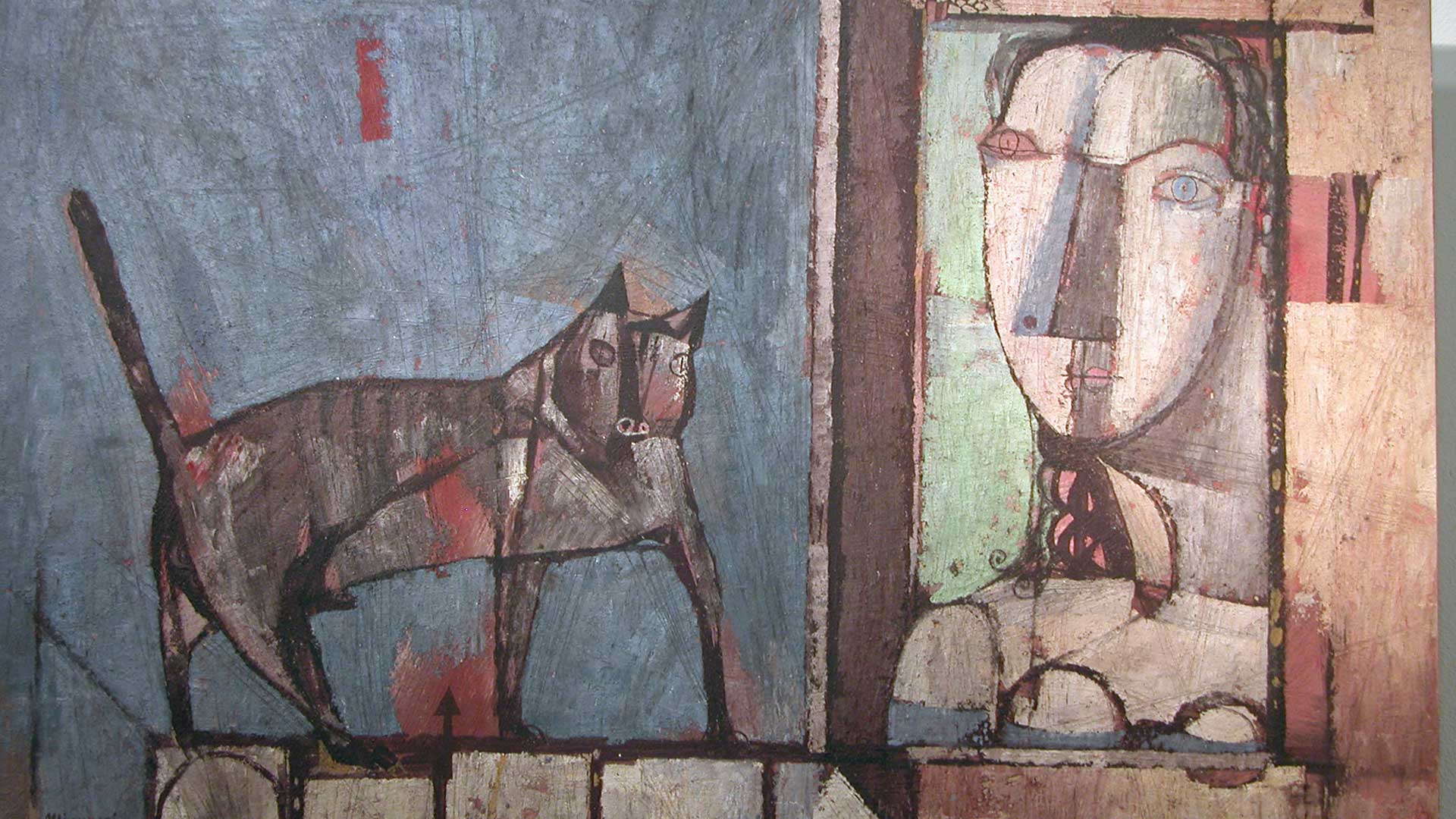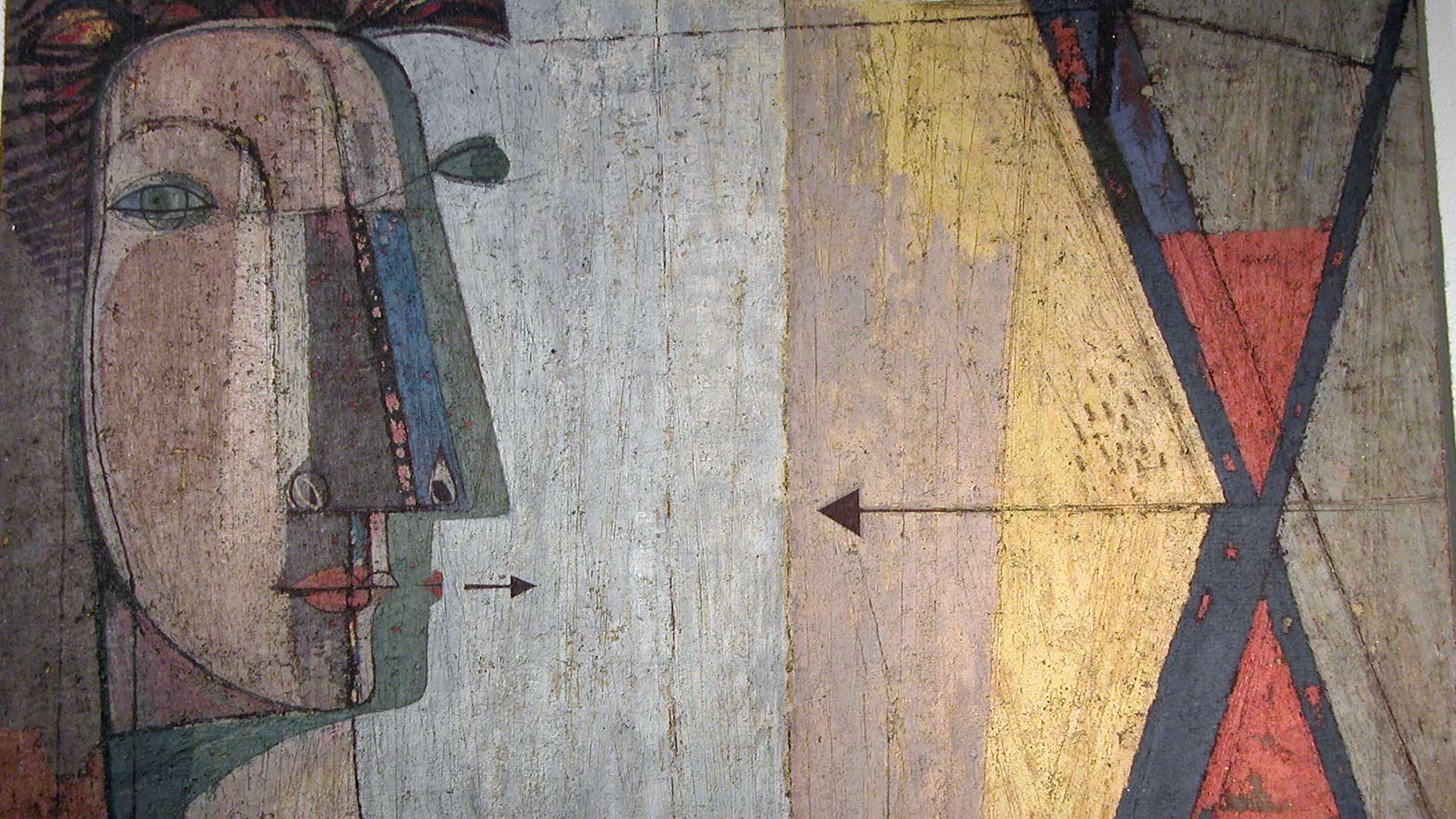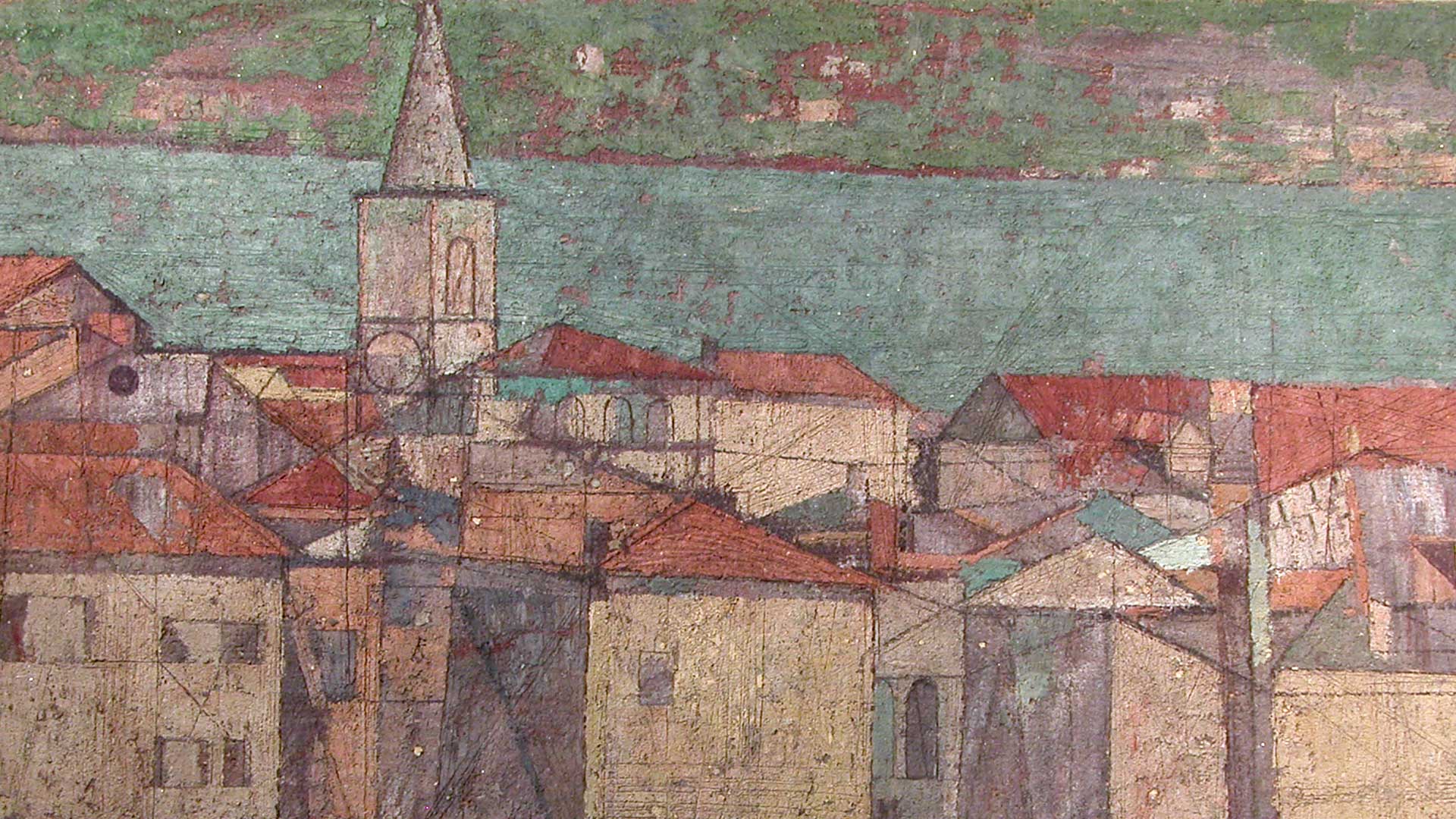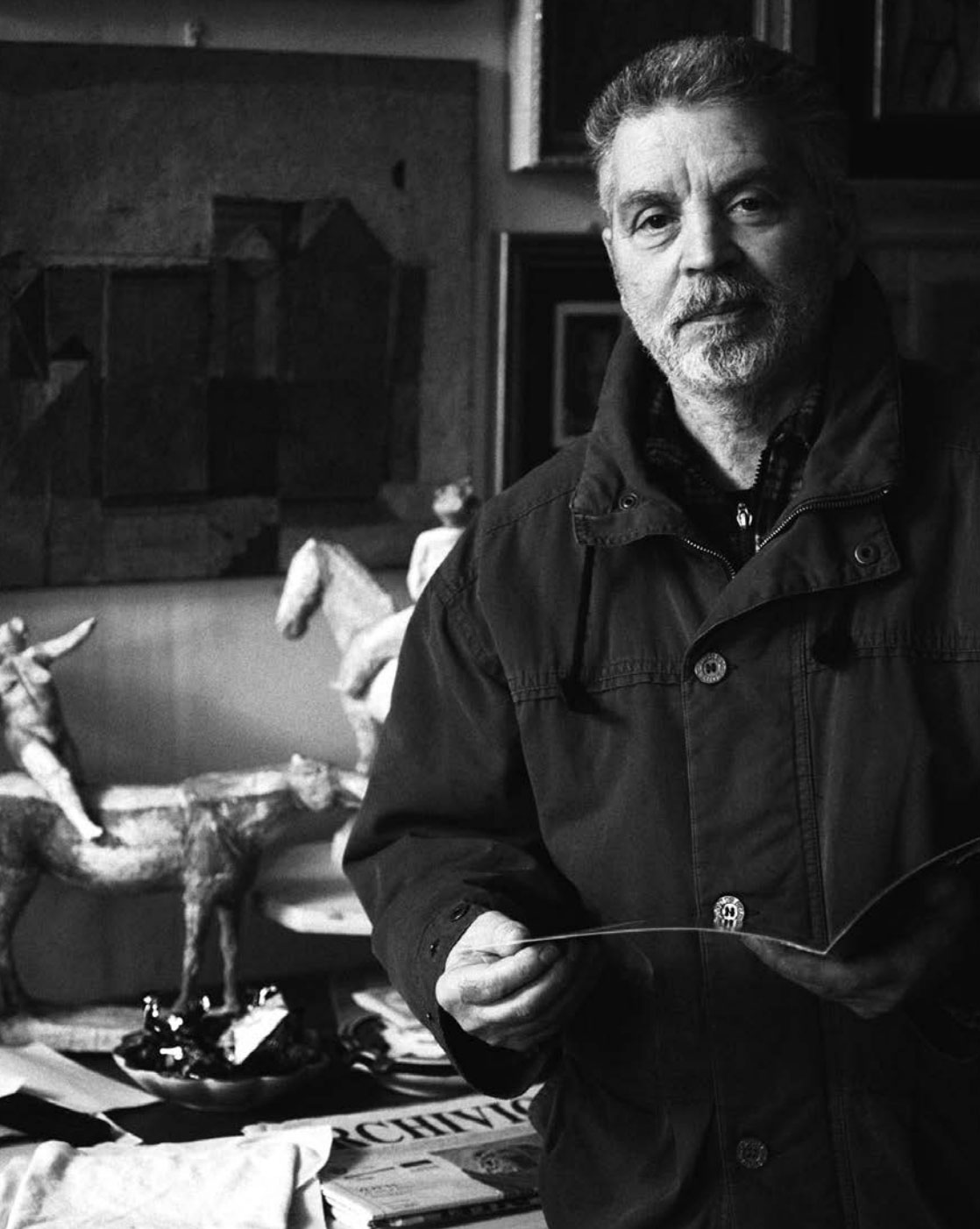Antonio Mignozzi






Biography
Antonio Mignozzi was born in Trebisacce (Province of Cosenza) on 7 March 1942.
He attended the Liceo Artistico (Art School) of Rome and graduated from the Istituto D’Arte (Institute of Art) in Bari. He completed his painting and sculpture studies in Milan at the Accademia di Belle Arti (Brera Academy of Fine Arts) (1967 – 1972) under the guidance of Marino Marini and Lorenzo Pepe. Since 1973 he lives and works in Verbania.
Antonio Mignozzi relies on the suggestions of a behavior freed from time: his paintings of canvases prepared for frescoes are offered as fragments of detached wall, of plaster taken from the recesses of a cultural memory that starts from the graffiti of the caves.
In the works of Mignozzi we can see the inspiration from the Giotto and Masaccio who entrusted the “return to order” of Italian art of this century on the threshold of the twenties, fresh from the futurist and metaphysical avant-gardes.
Over the years, Mignozzi tends more and more to essentiality, to a meditated discourse to be combined with music made up of pauses, silences, rather than effective chords. And here comes the name of Klee, on the other hand constantly present in his thoughts, but now elevated to an irreplaceable gestural reference. Even if he looks at it and betrays it, as it should be, to embark on an autonomous journey, governed by tensions of signs and timbral pacifications, where the calligraphic excavation and compositional balance that oversees the scene is enhanced
Personal exhibitions

Galleria La Chioccia, Bari
1969
1970
1971
1972
1975
1976
Galleria Il Vicolo, Voghera,
Galleria Traghetto, Venezia
1977
Galleria Valenza, Pantelleria
1979
Galleria Palmieri, Milano
1980
1981
1985
1986
1988
1990
Galerie Couleurs du Temps, Geneve CH,
Studio d’Arte Lanza, Verbania – Intra
1992
Studio d’Arte Lanza, Verbania – Intra
1993
1994
Galerie Schroder, Koln D,
Galerie Raubach, St.Gallen CH,
Galleria Poma, Morcote CH
1995
Galerie Allegra, Klosters CH,
Expositive Provinciehuis, Leystad,
Studio d’Arte Lanza, Verbania – Intra
1996
Galleria d’Arte Rediquadri, Rho,
Galleria Palmieri, Busto Arsizio
1997
Ancona MIART,
Fiera Milano Arte Contemporanea, Milano
Arte Padova ’97,
8a Mostra Mercato d’Arte Contemporanea , Padova
Studio d’Arte Lanza, Verbania – Intra
1998
1999
Studio d’Arte Lanza, Verbania – Intra
Antonio Mignozzi






Biography
Antonio Mignozzi was born in Trebisacce (Province of Cosenza) on 7 March 1942.
He attended the Liceo Artistico (Art School) of Rome and graduated from the Istituto D’Arte (Institute of Art) in Bari. He completed his painting and sculpture studies in Milan at the Accademia di Belle Arti (Brera Academy of Fine Arts) (1967 – 1972) under the guidance of Marino Marini and Lorenzo Pepe. Since 1973 he lives and works in Verbania.
Antonio Mignozzi relies on the suggestions of a behavior freed from time: his paintings of canvases prepared for frescoes are offered as fragments of detached wall, of plaster taken from the recesses of a cultural memory that starts from the graffiti of the caves.
In the works of Mignozzi we can see the inspiration from the Giotto and Masaccio who entrusted the “return to order” of Italian art of this century on the threshold of the twenties, fresh from the futurist and metaphysical avant-gardes.
Over the years, Mignozzi tends more and more to essentiality, to a meditated discourse to be combined with music made up of pauses, silences, rather than effective chords. And here comes the name of Klee, on the other hand constantly present in his thoughts, but now elevated to an irreplaceable gestural reference. Even if he looks at it and betrays it, as it should be, to embark on an autonomous journey, governed by tensions of signs and timbral pacifications, where the calligraphic excavation and compositional balance that oversees the scene is enhanced
Personal exhibitions

Galleria La Chioccia, Bari
1969
1970
1971
1972
1975
1976
Galleria Il Vicolo, Voghera,
Galleria Traghetto, Venezia
1977
Galleria Valenza, Pantelleria
1979
Galleria Palmieri, Milano
1980
1981
1985
1986
1988
1990
Galerie Couleurs du Temps, Geneve CH,
Studio d’Arte Lanza, Verbania – Intra
1992
Studio d’Arte Lanza, Verbania – Intra
1993
1994
Galerie Schroder, Koln D,
Galerie Raubach, St.Gallen CH,
Galleria Poma, Morcote CH
1995
Galerie Allegra, Klosters CH,
Expositive Provinciehuis, Leystad,
Studio d’Arte Lanza, Verbania – Intra
1996
Galleria d’Arte Rediquadri, Rho,
Galleria Palmieri, Busto Arsizio
1997
Ancona MIART,
Fiera Milano Arte Contemporanea, Milano
Arte Padova ’97,
8a Mostra Mercato d’Arte Contemporanea , Padova
Studio d’Arte Lanza, Verbania – Intra
1998
1999
Studio d’Arte Lanza, Verbania – Intra
